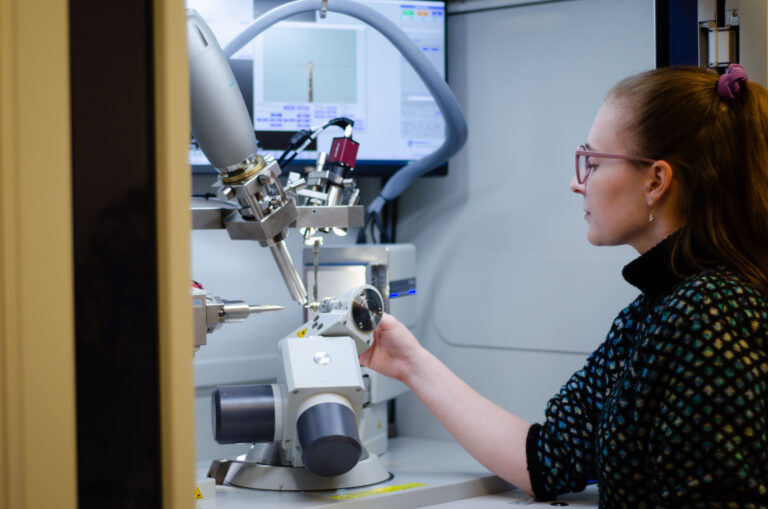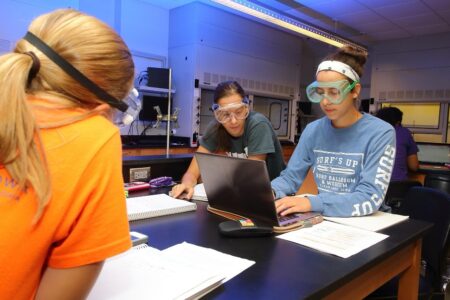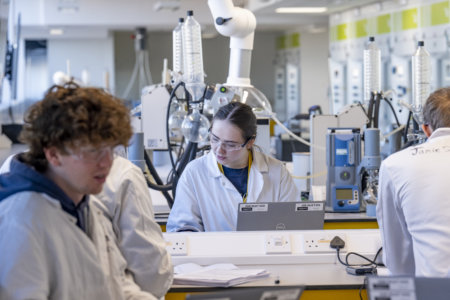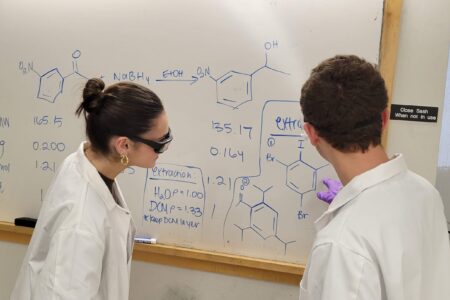
Many of the greatest scientific achievements in recent history have been the work of chemists who have mastered the basics of the field and pushed its boundaries. Take Marie Curie, who revolutionised medical science with her work on radioactivity, or Ahmed Zewail, whose femtochemistry breakthroughs opened doors to a new understanding of chemical reactions at an atomic level. And for a more contemporary example — there’s Carolyn Bertozzi, whose pioneering work in bioorthogonal chemistry is already reshaping the way we diagnose and treat diseases like cancer.
What these scientists have in common is that they didn’t just stop at understanding the periodic table; they pursued the highest level of education — a PhD. Doctoral success has fuelled their work, which has saved lives, propelled industries, and even won Nobel Prizes.
If this level of impact is what you’re after, there’s no better place to start working towards it than at an R1 university — a US institution recognised for its high level of research activity and faculty expertise. Among the lineup, three stand out for their cutting-edge labs, collaboration with world-class faculty, and a network that spans industries and academia.
Read on to learn more about them and how they can help you follow in the footsteps of the world’s greatest chemists.

UMass Amherst’s Department of Chemistry was founded in 1868 and has historic ties to departments such as Chemical Engineering, Computer Science, Biochemistry & Molecular Biology, Physics, and Polymer Science & Engineering. Source: University of Massachusetts Amherst
University of Massachusetts Amherst
As the state’s flagship public institution, the University of Massachusetts Amherst boasts the largest chemistry graduate programme in New England, where over 150 graduate students collaborate with 25 leading faculty members to push the boundaries of chemical knowledge. Recent research highlights include the development of a fluorescence imaging system for live cells, novel platforms for RNA synthesis, and innovations in minimising harmful diesel emissions. These achievements are more than intellectual explorations — they are reshaping industries and addressing global challenges. They also explain why both UMass and its Department of Chemistry are consistently top-ranked.
The department is ranked #102 globally and #38 nationally for chemistry by Research.com. The university itself is recognised as the #1 public institution in New England and places within the top 15% of public schools in the US, according to US News & World Report. Globally, UMass Amherst ranks among the top 200 for chemistry, with recognition from Times Higher Education and QS Top Universities.
For PhD candidates, these numbers indicate much more than prestige. They are signs of comprehensive curricula, world-class faculty, and cutting-edge facilities — all of which feed into the strength of the Chemistry Graduate Programme.
In this programme you will gain expertise on materials synthesis, fabrication, and characterisation, applying this to the development of new sensors, devices, catalysts, and biofunctional materials. You will also apply biophysical and bioanalytical techniques to explore protein structure, folding, and function, strengthened by deep expertise across traditional areas like analytical, inorganic, organic, and physical chemistry.
The best part? Knowledge gained in classrooms is always applied in state-of-the-art facilities, including the Institute for Applied Life Sciences, which houses advanced equipment like a nanofabrication cleanroom and high-field NMR spectrometers.
Learn more about advancing your chemistry career at UMass Amherst.

UCI has approximately US$10 million in new extramural research funding each year and a total funding of about US$20 million at any given time. Source: University of California, Irvine
University of California, Irvine
Founded in 1965, the University of California, Irvine (UCI) consistently ranks among the nation’s top 10 public universities according to US News & World Report. Its Department of Chemistry is known for blending a solid traditional foundation with hands-on research experience across emerging fields. Students primarily enrol in the PhD programme, earning a master’s degree along the way.
This programme emphasises both breadth and depth of knowledge in modern chemistry, preparing graduates for competitive roles in academic and industrial research, as well as diverse career pathways. Areas of specialisation include Analytical Chemistry, Atmospheric Chemistry, Chemical Biology, Inorganic Chemistry, Materials Chemistry, Nuclear Materials Chemistry, Organic Chemistry, Physical Chemistry, and Theoretical Chemistry.
Flexibility aside, another standout feature of the programme is the interdisciplinary Chemical and Materials Physics (ChaMP) programme. This initiative bridges the gap between condensed matter physics and physical chemistry, equipping students with a broad education in applied physical sciences and modern laboratory and computational skills.
This level of breadth explains why the Department of Chemistry is currently home to over 250 graduate students, fostering a dynamic research environment rich in collaboration and innovation. With personalised mentoring from faculty advisors, they receive the attention and support needed to excel in their research pursuits. In the past five years, over 30 chemistry graduate students at UCI have been awarded the prestigious NSF Graduate Research Fellowship Programme (GRFP).

Seismograph with paper in action and earthquake – 3D Rendering
Texas A&M University
At Texas A&M University’s (TAMU) Department of Chemistry, excellence in teaching, research, and mentorship converge to create a vibrant academic environment. Its graduate programme, which hosts around 270 students and 70 postdoctoral fellows, is designed to provide rigorous training in both research and communication.
Here, PhD students are immersed in extensive research experiences, exploring areas that drive innovation in energy, materials science, molecular synthesis, and their applications in medicine and engineering. With access to cutting-edge facilities and expert faculty, they benefit from a multidisciplinary approach that prepares them for success in academia, industry, and government research.
Life beyond the classroom is equally enriching. A key part of the graduate experience at Texas A&M is the opportunity for professional development and community engagement through various student organisations. Groups like the Graduate Student Association of Chemistry (GSAC), the Organisation for Cultural Diversity in Chemistry (OCDC), and Women in Science and Engineering (WISE) create a collaborative and supportive atmosphere to enhance both social and professional growth.
This full experience is accessible to all. PhD applicants are automatically considered for supplemental fellowships offered by the department and university. Upon acceptance, they receive an annual assistantship stipend of US$29,400, with tuition and mandatory fees fully covered for at least five years of graduate study, whether domestic or international.
*Some of the institutions featured in this article are commercial partners of Study International










